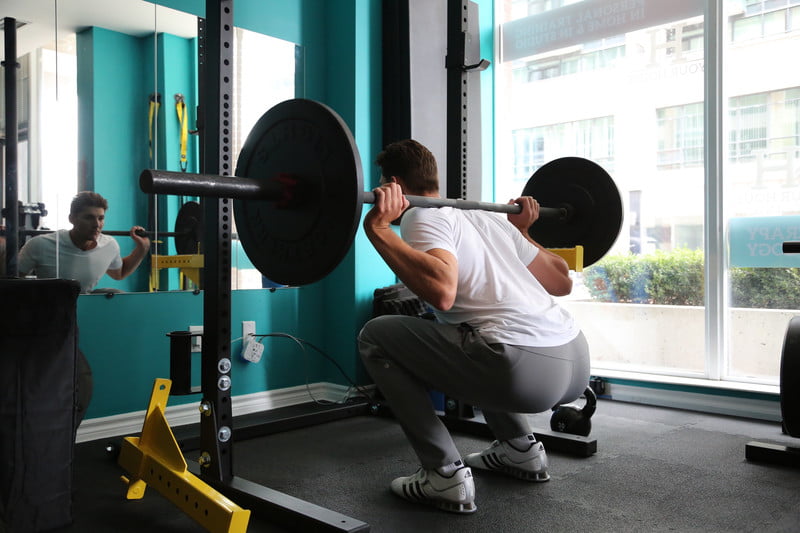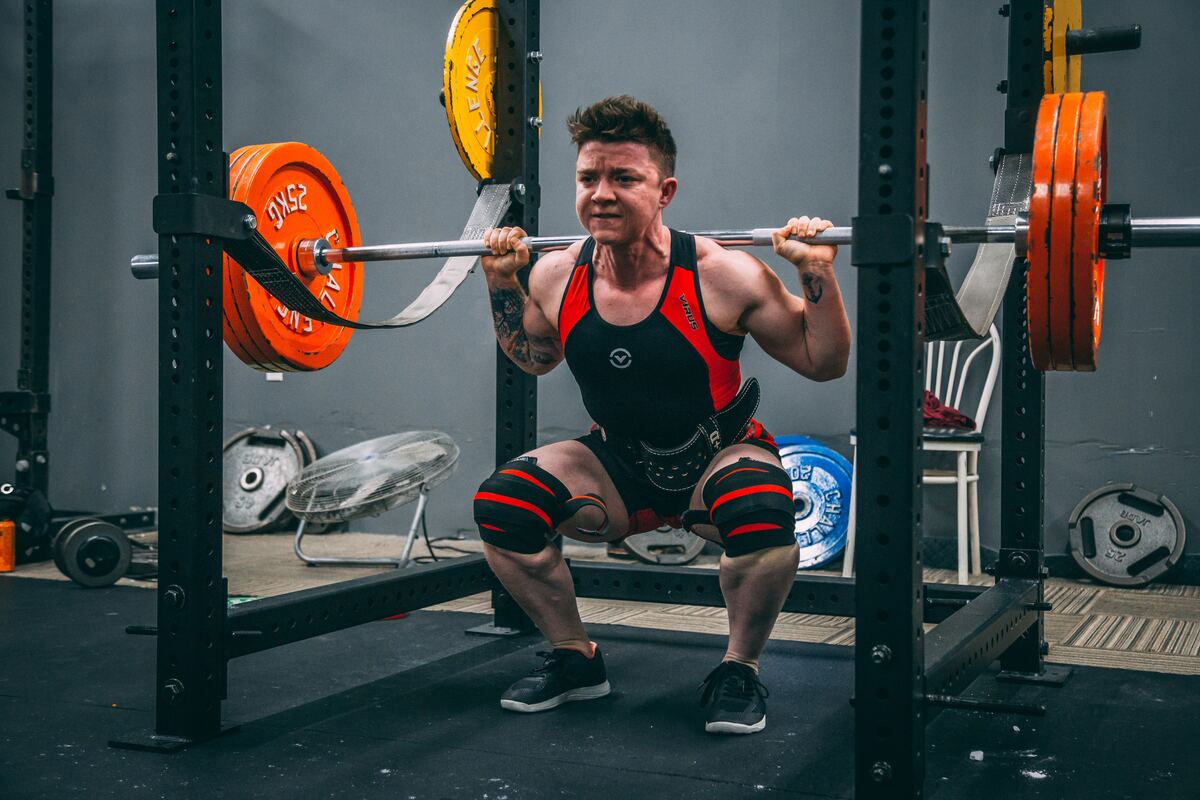
Did you know that the squat is a game-changing exercise, particularly for the lower body? It develops your muscles, strengthens the core, and helps with athletic-related activities.
However, it is not out of place to be caught in the web of asking questions like, “How much average squat weight is needed for standard squats?” This is due to a lot of conflicting information online, making it easy to compare your fitness journey to others.
Hence, this article aims to answer such questions while laying emphasis on monitoring your progress for results. So whether you are a beginner, an intermediate fitness enthusiast, or an expert, you will learn practical strategies to improve your squat standards and reach your

What are the squat standards for men?
Overall, the average squat weight for men depends on their body weight and fitness level. The following is a breakdown of the squat standards for men according to these factors.
| Bodyweight (lbs) | Beginner | Novice | Intermediate | Advanced | Elite |
|---|---|---|---|---|---|
| 110 | 80 | 126 | 155 | 175 | 274 |
| 120 | 88 | 139 | 172 | 199 | 308 |
| 130 | 96 | 151 | 187 | 220 | 339 |
| 140 | 103 | 162 | 202 | 240 | 368 |
| 150 | 110 | 172 | 216 | 258 | 394 |
| 160 | 117 | 181 | 228 | 275 | 419 |
| 170 | 123 | 190 | 240 | 291 | 443 |
| 180 | 128 | 199 | 251 | 307 | 465 |
| 190 | 134 | 207 | 262 | 321 | 486 |
| 200 | 139 | 214 | 272 | 335 | 506 |
| 210 | 144 | 221 | 281 | 348 | 525 |
| 220 | 148 | 228 | 291 | 360 | 543 |
| 230 | 153 | 235 | 299 | 372 | 561 |
| 240 | 157 | 241 | 308 | 383 | 577 |
| 250 | 161 | 247 | 316 | 394 | 593 |
| 260 | 165 | 253 | 323 | 405 | 608 |
| 270 | 168 | 258 | 331 | 415 | 623 |
| 280 | 172 | 264 | 338 | 424 | 637 |
| 290 | 176 | 269 | 345 | 434 | 651 |
| 300 | 179 | 274 | 351 | 443 | 664 |
| 310 | 182 | 278 | 358 | 452 | 677 |
What does each skill level mean?
Generally, there are four skill levels for workout trainers, and here is what they mean:
- Beginner: A beginner is stronger than 5 percent of lifters.
- Novice: A novice is stronger than 25 percent of lifters.
- Intermediate: An intermediate lifter is stronger than 50 percent of lifters.
- Advanced: This refers to a consistent trainer stronger than 75 percent of lifters.
- Elite: An elite lifter is stronger than 95 percent of the population of lifters.

How quickly can you increase your squat max?
The speed of increasing your squat max depends on several factors, which include experience, genetics, and recovery.
Hence, the expectation differs between persons of different fitness levels. For instance, a beginner should expect to add 5.5 to 11 lbs per week because of rapid muscle adaptation to the new activities.
Meanwhile, an intermediate and expert trainer would experience smaller increases of about 2.2 to 5.5 lbs per week, as their muscles are already adapted and will need consistent work to push their boundaries.
Note that as your squat max increases, it is imperative to prioritize consistent work and progressive overload with proper form while maintaining a healthy diet and getting adequate rest.

Tips for improving your squat weight
Workout routine
Manipulate your workout routine to include compound exercises that will train those target muscles concurrently. These can be lunges, Bulgarian split squats, or hip thrusts. Make your routine interesting by improving your weights, sets, or reps over time, prioritizing the weights you can use with proper form.
Progressive overload
To actualize this, add small weight increments to your squats till you can comfortably perform the specific reps and sets accurately. As you improve, steadily increase the number of sets or reps per weight to keep challenging your muscles.
You could add several squat variations like front squats, box squats, or Bulgarian split squats for better results.
Diet
Consuming enough calories to support muscle growth with an emphasis on protein and complex carbohydrates for energy is a major plan to improve your squat weight. Also, prioritize whole grains, fruits, vegetables, and lean protein sources to obtain nutrients that will fuel your workouts and muscle recovery.
Rest and recovery
It is imperative to prioritize good sleep to have effective results and improve your squat weight. Aim for seven to eight hours of quality sleep each night to allow your body to repair and rebuild muscle tissue. Also, add low-intensity activities like walking or yoga on rest days to promote blood flow and aid recovery, and take rest days when needed.
Editors' Recommendations
- How to do a goblet squat: Your complete guide
- Do you need intra workout carbs?
- Anyone can do Chris Hemsworth’s 15-minute resistance band workout
- How to do skull crushers the right way: The do’s and don’ts you need to know
- Training for a 10k race: Everything you need to know



